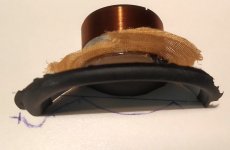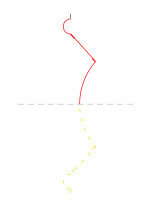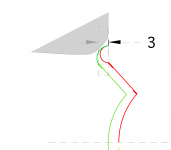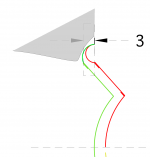Hi, I came across terms interoception and exteroception which relate to speaker vs. headphone listening as well so there probably is at least some difference between prefered sound of the two. After all it is the brain that processes the data from the sensor(s). In case anyone is interested here is very interesting interview on neuroscientist Andrew Huberman Andrew Huberman: Neuroscience of Optimal Performance | Lex Fridman Podcast #139 - YouTube who briefly mentions a difference between speaker and headphone listening, around 58:50 mark.
Well that's all up to a guy who makes the recording and who mixes the spectral balance that it sounds "just right". But he uses some loudspeakers for that. Do they have a neutral spectral balance, and what is that? How these loudspeakers should be designed? That's what the circle of confusion is all about. It's not just a habit.
Absolutely correct. After years of working with mics and a specific set of monitors, an engineer eventually gets a feeling of how the recording mix translates through those specific monitors (the monitors become “invisible”) and the engineer is subsequently loathe to begin the process anew with a different set of monitors presenting a different spectral balance to become accustomed to.
I ask the same question all along. Still haven't found a convincing answer and I'm perfectly happy if there's none.You can design state-of-the-art waveguides with any reasonable and smooth DI with reasonably flat ON/LW, that is great no question about it.
Naturally however, the question is then what would that DI should be to maximize the performance of the speaker?
Smoothness and LFX are the rulling factors, there's no doubt about that. Just look at the Revel and KEF examples. There's really no target DI or PIR. Take the Revels - anyone making a direct radiating three-way like that (and taking some care) will END UP with the DI and PIR as those speakers. There's nothing inovative or modern with those. This still seems more like coincidental to me than a result of a reseach. They are very well crafted, also no doubt about that.The DI design becomes synonymous with PIR target, unless of course you suggest that the smoothness is the ruling factor.
Last edited:
You mean a waveguide? 🙂Is it impossible to do something for:
21/2” SB65WBAC25-4 / Aluminum – Sbacoustics
It is a very nice driver at low cost.
40 cm is OK 😉
I tried that in the past, not exactly with this driver, and was a bit dissapointed with the results but generally I still like the idea. Now we can simulate it (to a degree) along with the source shape so if anyone provides a drawing of the cone+surround profile I can try too see what we can get.
Fullrange driver TC9 dimensions here along with some diy waveguide data https://www.diyaudio.com/forums/full-range/321666-waveguide-tc9-10f-3.html#post5428815
I've measured (with calipers) the Peerless TA6FC00 and Tymphany 830970 as well, and I'm planning on simulating and 3D-printing horns for them. Waiting for 3D-printer to arrive.
The 830970 (link) seems especially well suited for horn loading with its inverted surround and very shallow cone. Top of dome is in line with front surface/cone edge. Sensitivity is a bit low for use as tweeter, but maybe enough when combined with a waveguide?
/Anton
The 830970 (link) seems especially well suited for horn loading with its inverted surround and very shallow cone. Top of dome is in line with front surface/cone edge. Sensitivity is a bit low for use as tweeter, but maybe enough when combined with a waveguide?
/Anton
I used Peerless 830985, still have them, but that was long time ago in the Dark Ages of waveguide design.... 🙂
You mean a waveguide? 🙂
I tried that in the past, not exactly with this driver, and was a bit dissapointed with the results but generally I still like the idea. Now we can simulate it (to a degree) along with the source shape so if anyone provides a drawing of the cone+surround profile I can try too see what we can get.
Yes 🙂
I finally tried to load Ath4 on the only PC platform I have access to but it was to old. Otherwise I have had a go at it myself.
I wish you could, once you get your auto-optimizing system running, spare a few hours over a night with the task to get something usable out of that SB driver - and a bigger size is no problem - a lower fo would be desirable - say 4-600 Hz.
//
PS OK - I see if I can get an accurate drawing!
Last edited:
And then the question how the WG is to mate with the driver...?
Xmax/mec = +/- 3mm in picture....
//
Xmax/mec = +/- 3mm in picture....
//
Attachments
Last edited:
so how does one define something that is not flat? or contains no discontinuities isn't the assumption that the horn only works if if it fed X ??
and that the classic assumptions all point to the region in question as the source of all ills for horns...???
and that the classic assumptions all point to the region in question as the source of all ills for horns...???
Another typical high end tower speaker, rated "very good":
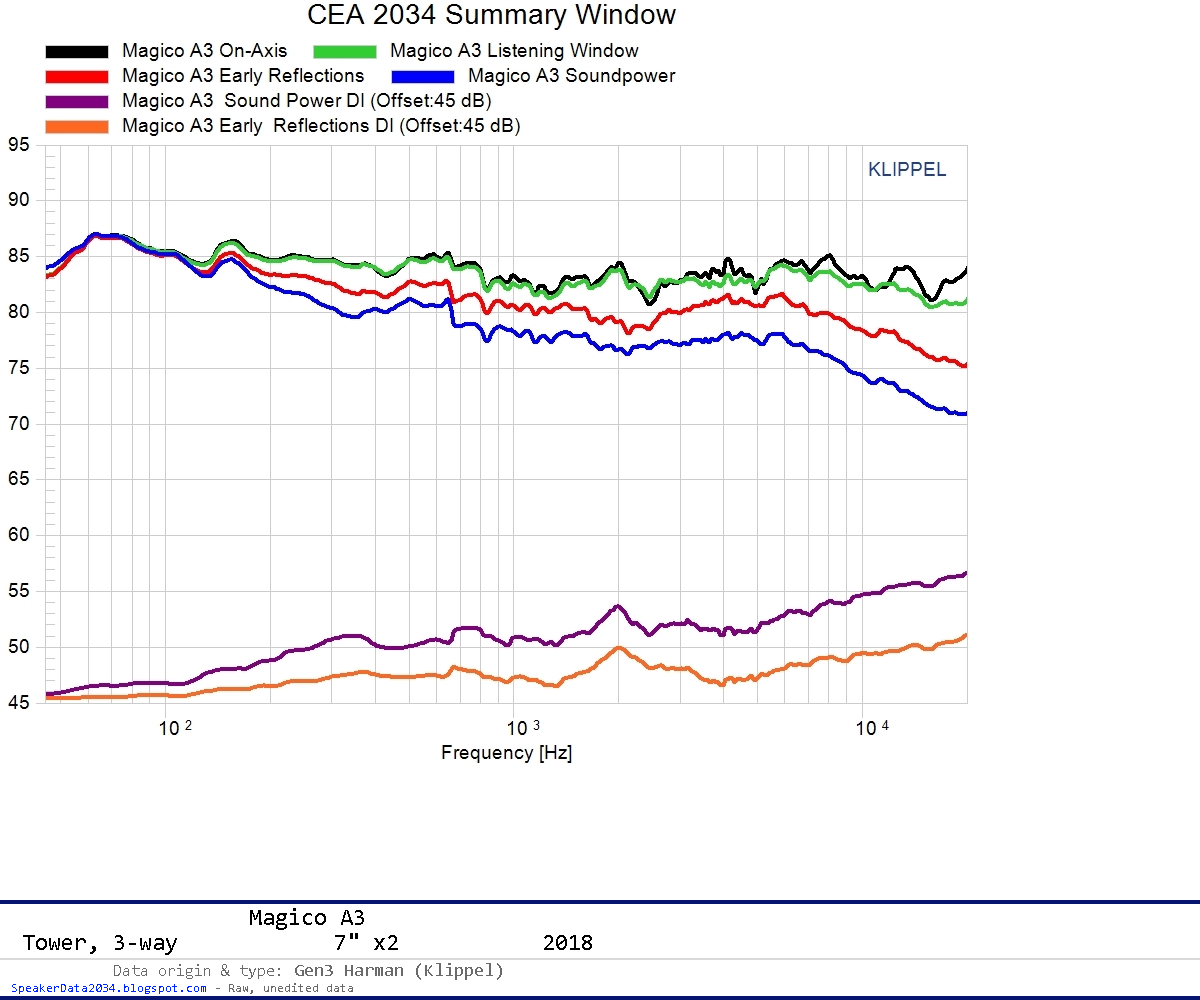
I think mabat is right in stating that most of these high end 2 or 3 way monitors + bass array (which they are conceptually) are very similar. This applies not only to measurements - and thus to Spinorama data, but also to the actual listening experience. People who have attended hi-fi shows will recognize this.

I think mabat is right in stating that most of these high end 2 or 3 way monitors + bass array (which they are conceptually) are very similar. This applies not only to measurements - and thus to Spinorama data, but also to the actual listening experience. People who have attended hi-fi shows will recognize this.
The 830970 (link) seems especially well suited for horn loading with its inverted surround and very shallow cone. Top of dome is in line with front surface/cone edge. Sensitivity is a bit low for use as tweeter, but maybe enough when combined with a waveguide?
/Anton
A rising response would be ideal for a full-range driver that has to play up to 20kHz, because a waveguide won't boost the treble.
Most of such cone drivers suffer from (severe) cone breakup though, so it's probably better to use a well-behaved driver that makes it to 20kHz and bring the treble up to level by using eq.
There is much to argue about such concepts, but there is also little doubt that these can (still) offer a lot of listening pleasure.
xrk971's Tractrix loaded PRV 5MR450-NDY:
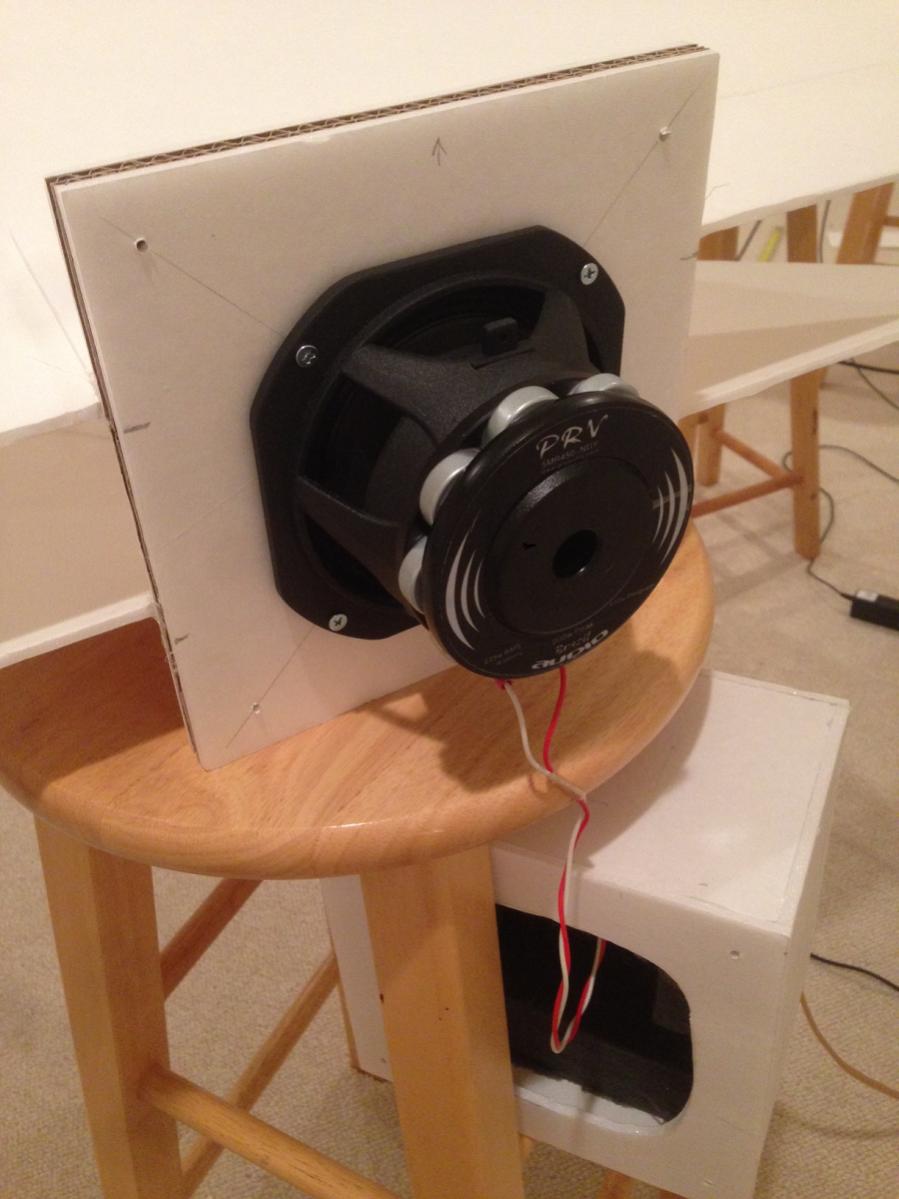
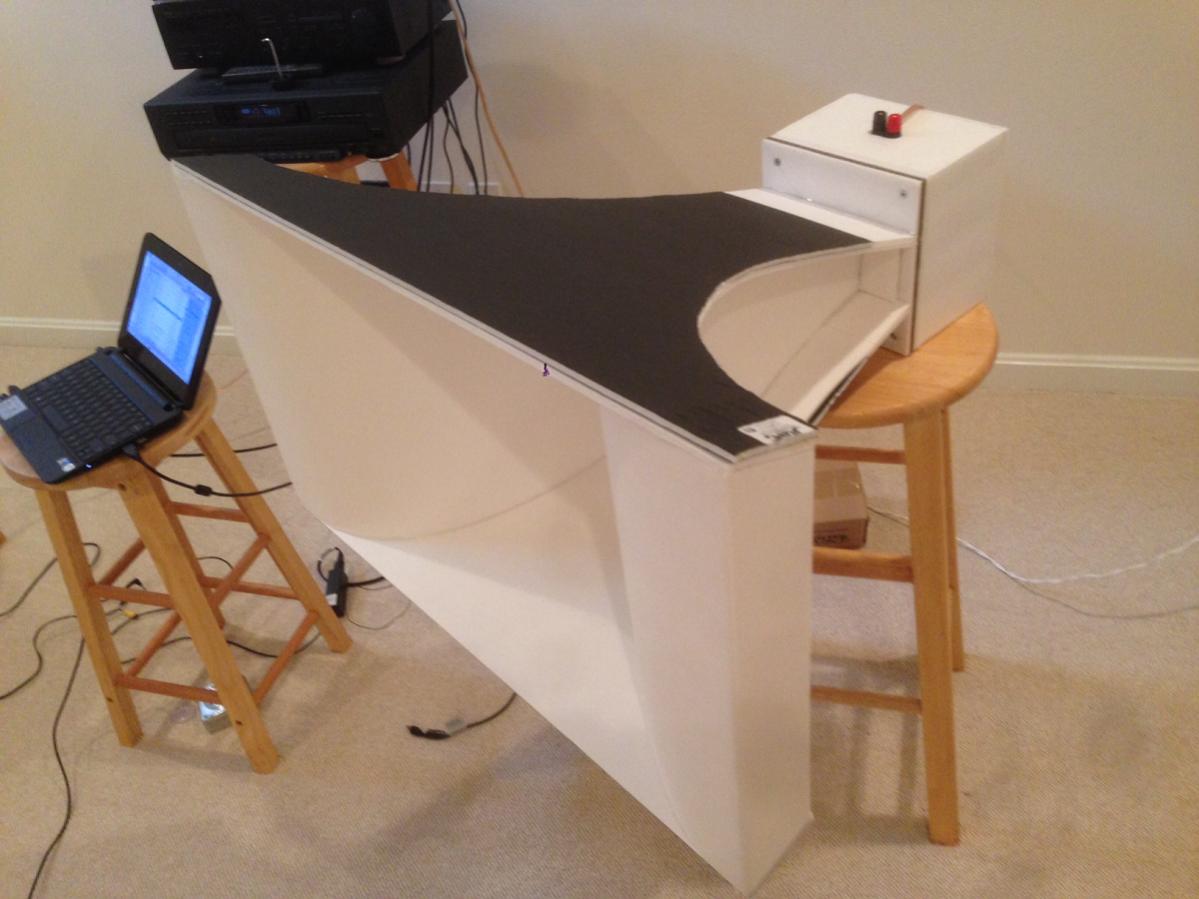
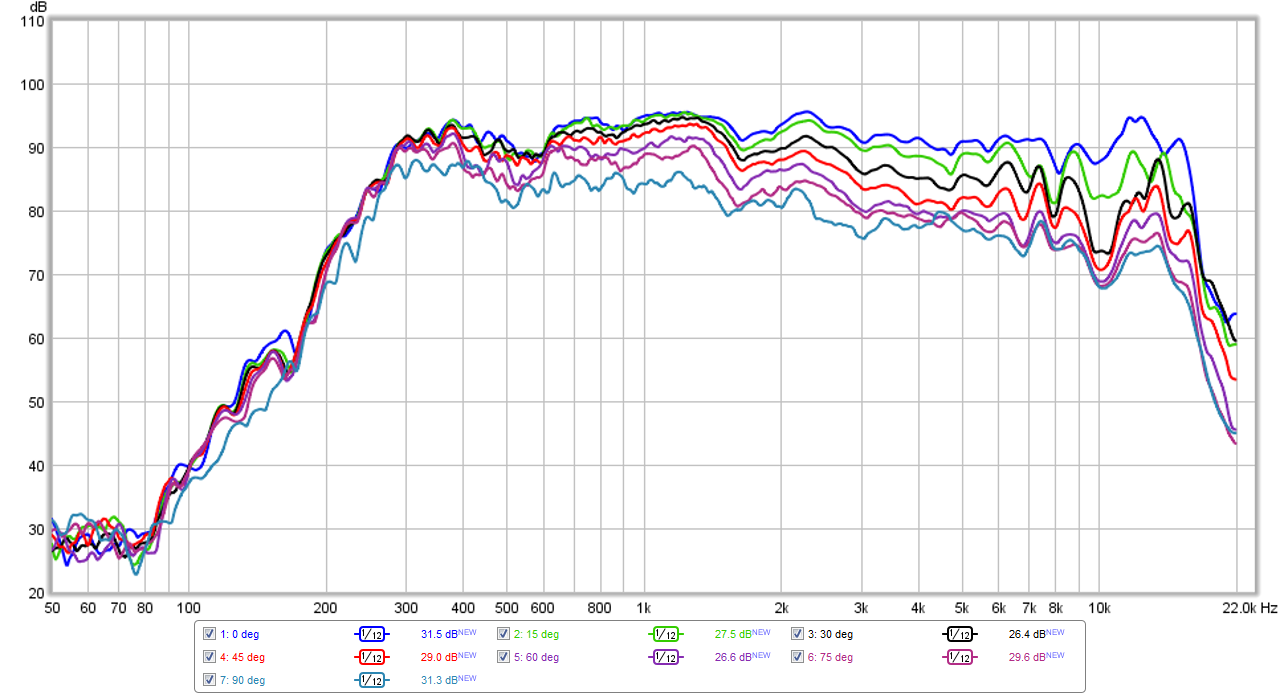
On another (higher) level, some people argue that Polymer and similar (non-metallic) diaphragms cannot reproduce cymbals in a natural, realistic fashion.
xrk971's Tractrix loaded PRV 5MR450-NDY:
On another (higher) level, some people argue that Polymer and similar (non-metallic) diaphragms cannot reproduce cymbals in a natural, realistic fashion.
Last edited:
I hope I am not pestering everyone with my posts…
No, not at all. I find your posts to be refreshingly intelligent and thoughtful.
That we seem to agree doesn't hurt either.
I think there's still a lot of confusion going on.
Recording made on perfectly flat loudspeakers in every regard (ON/LW, ER, PIR, SP, DI, "flat everything") wouldn't sound too bright when listened to on such loudspeakers, simply because it woudn't sound too bright to the person mixing the recording using those loudspeakers.
The questions are: Is there any real (psychoacoustical) advantage in using non-flat loudspeakers from the beginning, instead? Like the ones with flat DI but falling response? Or like those with flat ON/LW and falling ER/PIR, as are virtually all loudspeakers used in practice, purely from historical reasons. And if this is the common practice, what should we do when designing new speakers if we can actually decide about the DI? How should we best conform to the existing situation? Or is the recording industry slowly moving to the more "flat-everything" speakers, as it advances, simply because such loudspeakers are more and more available? I'm still not sure. Maybe it even doesn't matter that much in the end, as long as the speakers are smooth enough and have plenty of bass 🙂
Recording made on perfectly flat loudspeakers in every regard (ON/LW, ER, PIR, SP, DI, "flat everything") wouldn't sound too bright when listened to on such loudspeakers, simply because it woudn't sound too bright to the person mixing the recording using those loudspeakers.
The questions are: Is there any real (psychoacoustical) advantage in using non-flat loudspeakers from the beginning, instead? Like the ones with flat DI but falling response? Or like those with flat ON/LW and falling ER/PIR, as are virtually all loudspeakers used in practice, purely from historical reasons. And if this is the common practice, what should we do when designing new speakers if we can actually decide about the DI? How should we best conform to the existing situation? Or is the recording industry slowly moving to the more "flat-everything" speakers, as it advances, simply because such loudspeakers are more and more available? I'm still not sure. Maybe it even doesn't matter that much in the end, as long as the speakers are smooth enough and have plenty of bass 🙂
Last edited:
Funny, I don't feel confused.
I understand what you are saying and I don't disagree, but your questions are esoteric and hypothetical, so more of a potential concern than actual data. I believe that the "circle-of-confusion" tends to get smaller as time goes on - monitor and home loudspeakers get better and better, etc. It may take some time, but I believe that we will all converge on the same answers eventually. Although, there may be more than one answer, and I can live with that. (I think that Floyd Toole would agree with this.) What is important to you - imaging vs. spaciousness for example, or new vs older recordings, etc. will be major factors and the same answers may not be optimal for both.
I understand what you are saying and I don't disagree, but your questions are esoteric and hypothetical, so more of a potential concern than actual data. I believe that the "circle-of-confusion" tends to get smaller as time goes on - monitor and home loudspeakers get better and better, etc. It may take some time, but I believe that we will all converge on the same answers eventually. Although, there may be more than one answer, and I can live with that. (I think that Floyd Toole would agree with this.) What is important to you - imaging vs. spaciousness for example, or new vs older recordings, etc. will be major factors and the same answers may not be optimal for both.
Yet we are not even able to answer why is a downward slope of radiated power desirable. Or if it is desirable at all. Maybe it's just a relic of sub-optimal loudspeaker design of the past decades. I would understand if "gets better" meant to be more like "flat-everything", but I still can't understand why we would want the response of the loudspeaker ifself to be falling on high frequencies. The more I think about it the more I'm convinced it's just a bad habit.
Last edited:
On imaging vs spaciousness: I think there can be a balance. I have waveguide stereo mains, but on top of them I have ‘omni’ satellites pointed at the back wall with >10ms delay and the same target curve as the mains applied. I have lost absolutely zero pinpoint imaging (I would argue it has actually been enhanced, strangely) but I also have a much greater sense of spaciousness. I think this is the next step after having realized excellent waveguide design.
Last edited:
- Home
- Loudspeakers
- Multi-Way
- Acoustic Horn Design – The Easy Way (Ath4)
